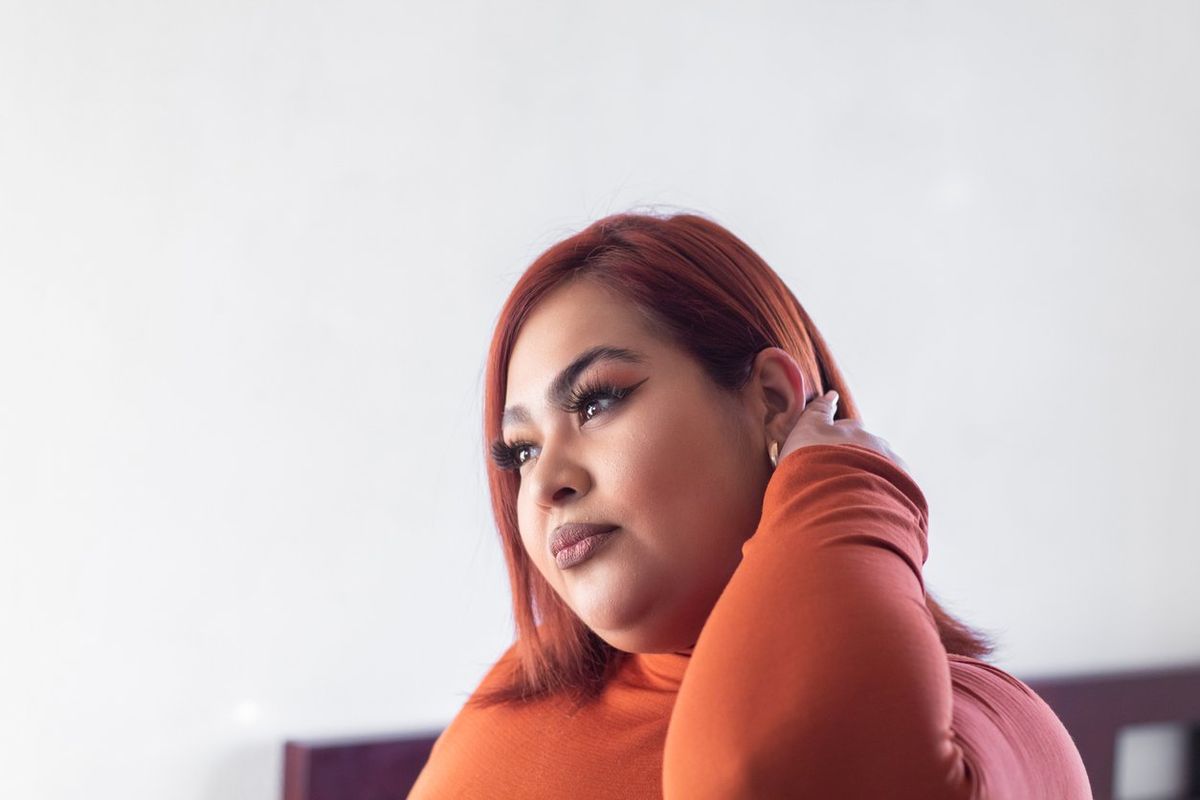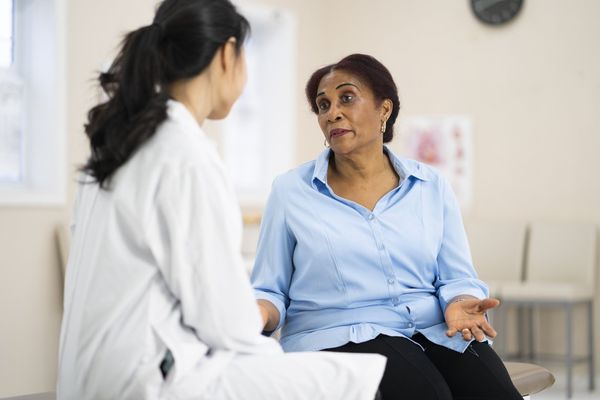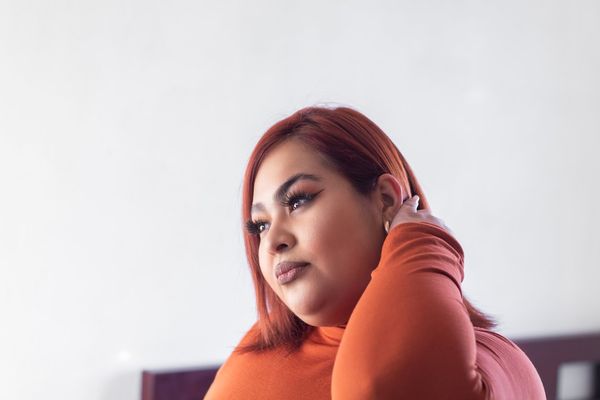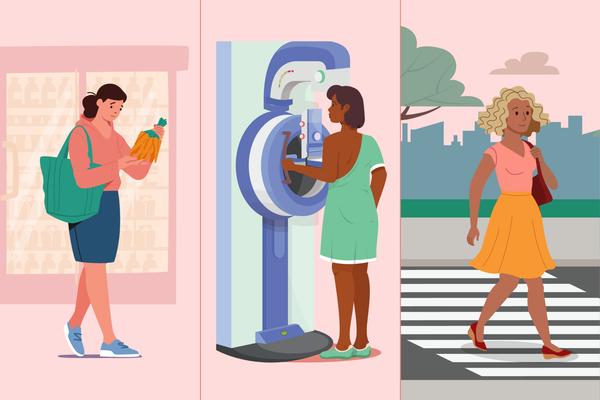In the earliest days of the Covid pandemic, the people who were most likely to be hospitalized or die from the virus had a few things in common.
Age was the greatest risk factor for becoming very sick with Covid. Race and ethnicity also seemed to have a connection, as Covid deaths were higher among Black, Hispanic and Native American people.
Having two or more health conditions (called comorbidities) — increased the risk of severe illness and death from Covid. But some of the comorbidities you hear a lot about, such as asthma, heart disease, lung disease and diabetes, weren’t the ones that gave Covid patients the highest risk of hospitalization and death.
It was obesity.
“Obesity is a disease characterized by a chronic inflammatory process, and that process had a major collision with multiple factors during the pandemic,” said
Fatima Cody Stanford, M.D., M.P.H., M.P.A., an associate professor of medicine at Massachusetts General Hospital and an obesity medicine physician scientist. “Covid is an acute inflammatory process, and these two things [Covid and obesity] don’t play so well together.”
Studies show that social determinants of health — the conditions in the environments where people are born, live, learn, work, play, worship and age — made the virus worse for people living with obesity. Covid was also worse for people of color. In her 2021 TEDx talk, Cody Stanford said people of color were battling three pandemics — obesity, racism and Covid-19.
Read: Social Determinants of Health, Health Disparities and Health Equity >>
How does obesity affect Covid?
The way obesity works provides insight as to why Covid proved so deadly.
“One very simple reason was that patients with obesity cannot expand their lungs that much,” said Holly F. Lofton, M.D., director of the medical weight management program at NYU Langone Health and a member of HealthyWomen’s Women’s Health Advisory Council. “If you add a respiratory illness like Covid to a condition where you already can't expand your lungs, the mucus starts to build, and it’s really hard to expel it.”
Lofton noted people with obesity usually have a higher waist circumference, defined as more than 35 inches in a female or 40 inches in a male. That midsection weight pushes on the diaphragm, making the chest cavity around the lungs smaller. For a patient with Covid, that smaller chest cavity leaves less room to breathe when breath is needed most.
Fat itself causes inflammation. Fat cells release cytokines, which are inflammatory hormones that can make immune function worse. People with obesity have high levels of one of those cytokines (Interleukin-6 or IL-6), and high levels of IL-6 were associated with poor outcomes in Covid patients.
The inflammation from obesity is also a risk factor for blood clots forming. Lofton said she warns people living with obesity who are otherwise healthy before having weight loss surgery about the risk of clots forming. Blood clots can happen in response to infection or lack of movement. Blood could be more likely to clot as a reaction to inflammation from Covid, and when clots travel to arteries and veins in the organs, it can lead to heart attack, stroke, organ damage or death.
When obesity, social determinants of health and Covid collide
Obesity is a disease. One study from the Centers for Disease Control and Prevention (CDC) tracking obesity rates found that Black/African American women had the highest rates of obesity compared to any other racial group at 57%. Among Hispanic women, 44% were living with obesity. Non-Hispanic white women had a 40% obesity rate, while Asian women had the lowest rates of obesity at 17%. A different study showed that 48% of all Native Americans had obesity.
Like other diseases, obesity is affected by social determinants of health, with many of the following factors contributing to its development.
- Racism and discrimination: Historic and current race-based inequities in healthcare, housing, education, criminal justice and economics have been shown to contribute to obesity.
“The Black Women’s Health Study was the first to really show how exposure to racism in and of itself predisposed you to a higher risk of obesity,” Cody Stanford said. “When you experience racism as a Black person here in the U.S. or anywhere, you experience stress. Stress causes storage of adipose [fat tissue].”
There was certainly no lack of chronic stress in 2020, from people losing friends and family members to Covid to the public exposure of acts of racial violence, such as the murders of George Floyd, Breonna Taylor and Ahmaud Arbery.
- Healthcare access: A lack of insurance, transportation, child care or ability to take time off work can make it harder to see a healthcare provider (HCP). Cultural differences, language barriers and provider bias can also affect the quality of healthcare people receive.
Read: The Cost of Racial Bias in OB-GYN Care >>
Lofton noted that medical mistrust by people of color, stemming from historical examples like the Tuskegee syphilis study and forced sterilization of Black, Latinx and Native American women, along with personal experiences of poor care can make it less likely for people from marginalized groups to seek treatment.
While healthcare access is often connected with education, income and wealth gaps, people of color from more privileged socioeconomic backgrounds also report disparities in treatment they believe is related to their race or ethnicity.
At the start of the pandemic in 2020, stories came out about people of color being turned away from hospitals in urban areas, with many dying from Covid at home. Lofton mentioned pharmaco-inequity, which is when provider bias or a lack of insurance leads marginalized groups to be given older or less effective medications when better treatments are available. For example, when Covid drugs hit the market, people of color were less likely to receive them. - Food deserts, food insecurity and food swamps: Areas that lack grocery stores and eateries with healthier and less expensive food options are called food deserts. They can be found in many urban and rural areas where people of color live. Even when food is available, lower incomes can also lead to food insecurity, where people can’t afford to buy enough food.
There are often a lot of fast food restaurants with more processed and less nutritious options available in these areas, however. Many times, they are even on the same block. These areas have been referred to as food swamps.
“They’re convenient, they’re cheap and they’re easy,” Cody Stanford said. “And when you're stressed, what does your body seek? You seek things that are comforting, and fast food can be that.” - Occupations: More people of color were likely to be employed as essential workers dealing with the public or performing job duties in close quarters without the option of working from home. They may have had less economic flexibility to leave those jobs or stay home when sick, putting them at greater risk of getting Covid.
- Weight bias: Multiple studies have found that HCPs have a negative bias against patients with overweight or obesity, which could affect the quality of care they receive.
“There are times when a physician has to make a decision, ‘Who am I going to give the ventilator to? There's only one ventilator, but there's two patients that need it,’” Lofton said, noting that weight bias could be a deciding factor in such cases.
Improving outcomes
If you have obesity, you can do your best to protect yourself from Covid-19 by staying up to date on Covid vaccines and taking preventive measures when in public, like wearing a face mask and washing your hands frequently or using hand sanitizer. You can also improve your outcome by testing immediately if you have symptoms and contacting your HCP as soon as you suspect Covid to get timely treatment.
You may not be able to control many of the factors that contribute to getting sick from Covid. But studies suggest that obesity treatment can improve your overall health and reduce the risk of poor outcomes from Covid. One study found that patients who had had weight loss surgery had a 60% lower risk of developing severe Covid complications.
In addition to preventive measures, Lofton stressed the importance of continuing education for HCPs to help eliminate weight bias in healthcare.
“Physicians need to be made aware that there’s unconscious weight bias, and that we should try to put that to the side when treating patients with obesity,” Lofton said.
Cody Stanford said her focus is improving overall health to help decrease chronic inflammation that leads to obesity and makes other diseases, such as Covid, more dangerous, while recognizing the intersection of race and class in overall outcomes.
“My goal is to get people to a happier, healthier state of being,” she said. “It’s not about giving them a number on a scale, but looking at cholesterol values, fasting blood sugar, insulin values, liver function — let’s look at all of that together. I emphasize the health piece of the puzzle, and helping prevent all of the diseases that obesity can cause.
This resource was created with support from Pfizer.
- Reclaim Your Wellness ›
- What You Need to Know About Obesity ›
- COVID-19 Reveals How Obesity Harms the Body in Real Time, Not Just Over a Lifetime ›
- Navigating Obesity and Stress Two Years Into the Covid-19 Pandemic ›
- Obesity Puts You at Higher Risk for Severe Illness from Covid-19 ›
- The Rise of Obesity Among Latinx People - HealthyWomen ›
- Covid and Obesity: How to Reduce Risk Factors - HealthyWomen ›
- La obesidad y el covid-19: Cómo reducir los factores de riesgo - HealthyWomen ›
- Ask the Expert: Lung Cancer in Women - HealthyWomen ›
- Am I at High Risk for Severe Illness from Covid-19? - HealthyWomen ›
- Ask the Expert: Covid-19 and Obesity - HealthyWomen ›





